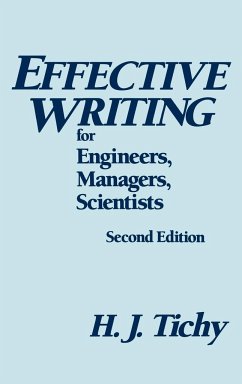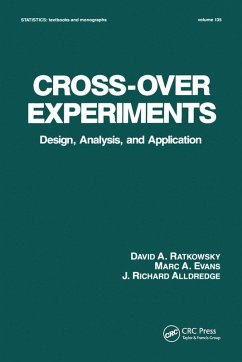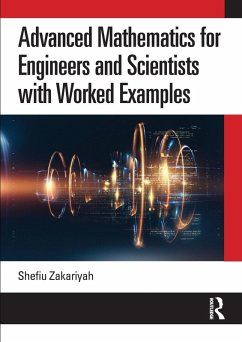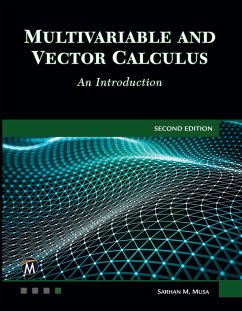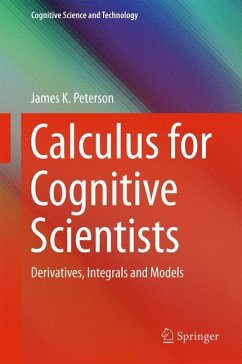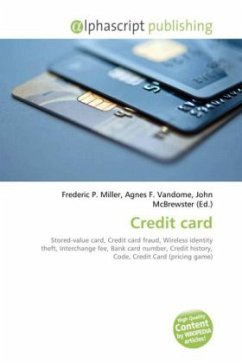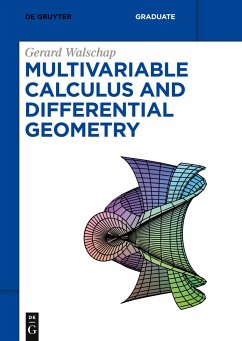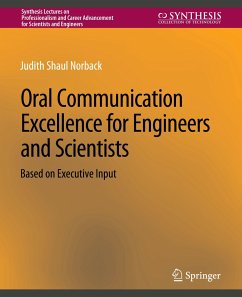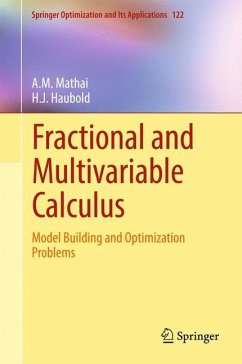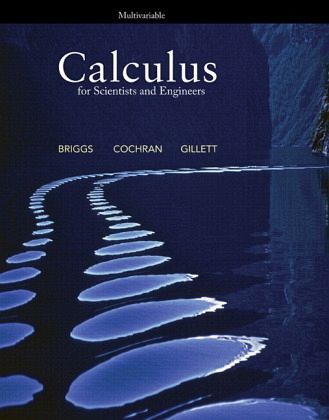
Calculus for Scientists and Engineers, Multivariable Plus MyMathLab -- Access Card Package, m. 1 Beilage, m. 1 Online-Zu
Versandkostenfrei!
Liefertermin unbestimmt
103,99 €
inkl. MwSt.
For a one-semester or two-quarter calculus course covering multivariable calculus for mathematics, engineering, and science majors.
Briggs/Cochran is the most successful new calculus series published in the last two decades. The authorsÆ decades of teaching experience resulted in a text that reflects how students generally use a textbookûi.e., they start in the exercises and refer back to the narrative for help as needed. The text therefore builds from a foundation of meticulously crafted exercise sets, then draws students into the narrative through writing that reflects the voice of the instructor, examples that are stepped out and thoughtfully annotated, and figures that are designed to teach rather than simply supplement the narrative. The authors appeal to studentsÆ geometric intuition to introduce fundamental concepts, laying a foundation for the rigorous development that follows.
To further support student learning, the MyMathLab course features an eBook with 700 Interactive Figures that can be manipulated to shed light on key concepts. In addition, the InstructorÆs Resource Guide and Test Bank features quizzes, test items, lecture support, guided projects, and more.
This book covers chapters multivariable topics (chapters 9ù15) of Calculus for Scientists and Engineers: Early Transcendentals,which is an expanded version of Calculus: Early Transcendentals by the same authors.
Product Description
Drawing on their decades of teaching experience, William Briggs and Lyle Cochran have created a calculus text that carries the teacher’s voice beyond the classroom. That voice—evident in the narrative, the figures, and the questions interspersed in the narrative—is a master teacher leading readers to deeper levels of understanding. The authors appeal to readers’ geometric intuition to introduce fundamental concepts and lay the foundation for the more rigorous development that follows. Comprehensive exercise sets have received praise for their creativity, quality, and scope. This book covers chapters multivariable topics (chapters 9—15) of Calculus for Scientists and Engineers: Early Transcendentals, which is an expanded version of Calculus: Early Transcendentals by the same authors.
0321844556 / 9780321844552 Calculus for Scientists and Engineers, Multivariable plus MyMathLab Student Access Kit
Package consists of
0321431308 / 9780321431301 MyMathLab/MyStatLab -- Glue-in Access Card
0321654064 / 9780321654069 MyMathLab Inside Star Sticker
0321785517 / 9780321785510 Calculus for Scientists and Engineers, Multivariable
Features + Benefits
Topics are introduced through concrete examples, geometric arguments, applications, and analogies rather than through abstract arguments. The authors appeal to students' intuition and geometric instincts to make calculus natural and believable.
Figures are designed to help today's visually oriented learners. They are conceived to convey important ideas and facilitate learning, annotated to lead students through the key ideas, and rendered using the latest software for unmatched clarity and precision.
Comprehensive exercise sets provide for a variety of student needs and are consistently structured and labeled to facilitate the creation of homework assignments by inspection.
Review Questions check that students have a general conceptual understanding of the essential ideas from the section.
Basic Skills exercises are linked to examples in the section so students get off to a good start with homework.
Further Explorations exercises extend students' abilities beyond the basics.
Applications present practical and novel applications and models that use the ideas presented in the section.
Additional Exercises challenge students to stretch their understanding by working through abstract exercises and proofs.
Examples are plentiful and stepped out in detail. Within examples, each step is annotated to help students understand what took place in that step.
Quick Check exercises punctuate the narrative at key points to test understanding of basic ideas and encourage students to read with pencil in hand.
The MyMathLab course for the text features the following:
More than 7,000 assignable exercises provide you with the options you need to meet the needs of students. Most exercises can be algorithmically regenerated for unlimited practice.
Learning aids include guided exercises, additional examples, and tutorial videos. You control how much help your students can get and when.
700 Interactive Figures in the eBook can be manipulated to shed light on key concepts. The figures are also ideal for in-class demonstrations.
Interactive Figure Exercises provide a way for you make the most of the Interactive Figures by including them in homework assignments.
A "Getting Ready for Calculus" chapter, with built-in diagnostic tests, identifies each student's gaps in skills and provides individual remediation directly to those skills that are lacking.
Ready-to-Go Courses designed by experienced instructors miminize the start-up time for new MyMathLab users.
Guided Projects, available for each chapter, require students to carry out extended calculations (e.g., finding the arc length of an ellipse), derive physical models (e.g., Kepler's Laws), or explore related topics (e.g., numerical integration). The "guided" nature of the projects provides scaffolding to help students tackle these more involved problems.
The Instructor's Resource Guide and Test Bank provides a wealth of instructional resources including Guided Projects, Lecture Support Notes with Key Concepts, Quick Quizzes for each section in the text, Chapter Reviews, Chapter Test Banks, Tips and Help for Interactive Figures, and Student Study Cards.
This book is an expanded version of Calculus: Early Transcendentals by the same authors. It contains an entire chapter devoted to differential equations and additional sections on other topics (Newton's method, surface area of solids of revolution, and hyperbolic functions). Most sections also contain additional exercises, many of them mid-level skills exercises.
9. Sequences and Infinite Series
9.1 An overview
9.2 Sequences
9.3 Infinite series
9.4 The Divergence and Integral Tests
9.5 The Ratio, Root, and Comparison Tests
9.6 Alternating series
10. Power Series
10.1 Approximating functions with polynomials
10.2 Properties of Power series
10.3 Taylor series
10.4 Working with Taylor series
11. Parametric and Polar Curves
11.1 Parametric equations
11.2 Polar coordinates
11.3 Calculus in polar coordinates
11.4 Conic sections
12. Vectors and Vector-Valued Functions
12.1 Vectors in the plane
12.2 Vectors in three dimensions
12.3 Dot products
12.4 Cross products
12.5 Lines and curves in space
12.6 Calculus of vector-valued functions
12.7 Motion in space
12.8 Length of curves
12.9 Curvature and normal vectors
13. Functions of Several Variables
13.1 Planes and surfaces
13.2 Graphs and level curves
13.3 Limits and continuity
13.4 Partial derivatives
13.5 The Chain Rule
13.6 Directional derivatives and the gradient
13.7 Tangent planes and linear approximation
13.8 Maximum/minimum problems
13.9 Lagrange multipliers
14. Multiple Integration
14.1 Double integrals over rectangular regions
14.2 Double integrals over general regions
14.3 Double integrals in polar coordinates
14.4 Triple integrals
14.5 Triple integrals in cylindrical and spherical coordinates
14.6 Integrals for mass calculations
14.7 Change of variables in multiple integrals
15. Vector Calculus
15.1 Vector fields
15.2 Line integrals
15.3 Conservative vector fields
15.4 Green's theorem
15.5 Divergence and curl
15.6 Surface integrals
15.6 Stokes' theorem
15.8 Divergence theorem
Briggs/Cochran is the most successful new calculus series published in the last two decades. The authorsÆ decades of teaching experience resulted in a text that reflects how students generally use a textbookûi.e., they start in the exercises and refer back to the narrative for help as needed. The text therefore builds from a foundation of meticulously crafted exercise sets, then draws students into the narrative through writing that reflects the voice of the instructor, examples that are stepped out and thoughtfully annotated, and figures that are designed to teach rather than simply supplement the narrative. The authors appeal to studentsÆ geometric intuition to introduce fundamental concepts, laying a foundation for the rigorous development that follows.
To further support student learning, the MyMathLab course features an eBook with 700 Interactive Figures that can be manipulated to shed light on key concepts. In addition, the InstructorÆs Resource Guide and Test Bank features quizzes, test items, lecture support, guided projects, and more.
This book covers chapters multivariable topics (chapters 9ù15) of Calculus for Scientists and Engineers: Early Transcendentals,which is an expanded version of Calculus: Early Transcendentals by the same authors.
Product Description
Drawing on their decades of teaching experience, William Briggs and Lyle Cochran have created a calculus text that carries the teacher’s voice beyond the classroom. That voice—evident in the narrative, the figures, and the questions interspersed in the narrative—is a master teacher leading readers to deeper levels of understanding. The authors appeal to readers’ geometric intuition to introduce fundamental concepts and lay the foundation for the more rigorous development that follows. Comprehensive exercise sets have received praise for their creativity, quality, and scope. This book covers chapters multivariable topics (chapters 9—15) of Calculus for Scientists and Engineers: Early Transcendentals, which is an expanded version of Calculus: Early Transcendentals by the same authors.
0321844556 / 9780321844552 Calculus for Scientists and Engineers, Multivariable plus MyMathLab Student Access Kit
Package consists of
0321431308 / 9780321431301 MyMathLab/MyStatLab -- Glue-in Access Card
0321654064 / 9780321654069 MyMathLab Inside Star Sticker
0321785517 / 9780321785510 Calculus for Scientists and Engineers, Multivariable
Features + Benefits
Topics are introduced through concrete examples, geometric arguments, applications, and analogies rather than through abstract arguments. The authors appeal to students' intuition and geometric instincts to make calculus natural and believable.
Figures are designed to help today's visually oriented learners. They are conceived to convey important ideas and facilitate learning, annotated to lead students through the key ideas, and rendered using the latest software for unmatched clarity and precision.
Comprehensive exercise sets provide for a variety of student needs and are consistently structured and labeled to facilitate the creation of homework assignments by inspection.
Review Questions check that students have a general conceptual understanding of the essential ideas from the section.
Basic Skills exercises are linked to examples in the section so students get off to a good start with homework.
Further Explorations exercises extend students' abilities beyond the basics.
Applications present practical and novel applications and models that use the ideas presented in the section.
Additional Exercises challenge students to stretch their understanding by working through abstract exercises and proofs.
Examples are plentiful and stepped out in detail. Within examples, each step is annotated to help students understand what took place in that step.
Quick Check exercises punctuate the narrative at key points to test understanding of basic ideas and encourage students to read with pencil in hand.
The MyMathLab course for the text features the following:
More than 7,000 assignable exercises provide you with the options you need to meet the needs of students. Most exercises can be algorithmically regenerated for unlimited practice.
Learning aids include guided exercises, additional examples, and tutorial videos. You control how much help your students can get and when.
700 Interactive Figures in the eBook can be manipulated to shed light on key concepts. The figures are also ideal for in-class demonstrations.
Interactive Figure Exercises provide a way for you make the most of the Interactive Figures by including them in homework assignments.
A "Getting Ready for Calculus" chapter, with built-in diagnostic tests, identifies each student's gaps in skills and provides individual remediation directly to those skills that are lacking.
Ready-to-Go Courses designed by experienced instructors miminize the start-up time for new MyMathLab users.
Guided Projects, available for each chapter, require students to carry out extended calculations (e.g., finding the arc length of an ellipse), derive physical models (e.g., Kepler's Laws), or explore related topics (e.g., numerical integration). The "guided" nature of the projects provides scaffolding to help students tackle these more involved problems.
The Instructor's Resource Guide and Test Bank provides a wealth of instructional resources including Guided Projects, Lecture Support Notes with Key Concepts, Quick Quizzes for each section in the text, Chapter Reviews, Chapter Test Banks, Tips and Help for Interactive Figures, and Student Study Cards.
This book is an expanded version of Calculus: Early Transcendentals by the same authors. It contains an entire chapter devoted to differential equations and additional sections on other topics (Newton's method, surface area of solids of revolution, and hyperbolic functions). Most sections also contain additional exercises, many of them mid-level skills exercises.
9. Sequences and Infinite Series
9.1 An overview
9.2 Sequences
9.3 Infinite series
9.4 The Divergence and Integral Tests
9.5 The Ratio, Root, and Comparison Tests
9.6 Alternating series
10. Power Series
10.1 Approximating functions with polynomials
10.2 Properties of Power series
10.3 Taylor series
10.4 Working with Taylor series
11. Parametric and Polar Curves
11.1 Parametric equations
11.2 Polar coordinates
11.3 Calculus in polar coordinates
11.4 Conic sections
12. Vectors and Vector-Valued Functions
12.1 Vectors in the plane
12.2 Vectors in three dimensions
12.3 Dot products
12.4 Cross products
12.5 Lines and curves in space
12.6 Calculus of vector-valued functions
12.7 Motion in space
12.8 Length of curves
12.9 Curvature and normal vectors
13. Functions of Several Variables
13.1 Planes and surfaces
13.2 Graphs and level curves
13.3 Limits and continuity
13.4 Partial derivatives
13.5 The Chain Rule
13.6 Directional derivatives and the gradient
13.7 Tangent planes and linear approximation
13.8 Maximum/minimum problems
13.9 Lagrange multipliers
14. Multiple Integration
14.1 Double integrals over rectangular regions
14.2 Double integrals over general regions
14.3 Double integrals in polar coordinates
14.4 Triple integrals
14.5 Triple integrals in cylindrical and spherical coordinates
14.6 Integrals for mass calculations
14.7 Change of variables in multiple integrals
15. Vector Calculus
15.1 Vector fields
15.2 Line integrals
15.3 Conservative vector fields
15.4 Green's theorem
15.5 Divergence and curl
15.6 Surface integrals
15.6 Stokes' theorem
15.8 Divergence theorem
For a one-semester or two-quarter calculus course covering multivariable calculus for mathematics, engineering, and science majors.
Briggs/Cochran is the most successful new calculus series published in the last two decades. The authors' decades of teaching experience resulted in a text that reflects how students generally use a textbook-i.e., they start in the exercises and refer back to the narrative for help as needed. The text therefore builds from a foundation of meticulously crafted exercise sets, then draws students into the narrative through writing that reflects the voice of the instructor, examples that are stepped out and thoughtfully annotated, and figures that are designed to teach rather than simply supplement the narrative. The authors appeal to students' geometric intuition to introduce fundamental concepts, laying a foundation for the rigorous development that follows.
To further support student learning, the MyMathLab course features an eBook with 700 Interactive Figures that can be manipulated to shed light on key concepts. In addition, the Instructor's Resource Guide and Test Bank features quizzes, test items, lecture support, guided projects, and more.
This book covers chapters multivariable topics (chapters 9-15) of Calculus for Scientists and Engineers: Early Transcendentals,which is an expanded version of Calculus: Early Transcendentalsby the same authors.
Briggs/Cochran is the most successful new calculus series published in the last two decades. The authors' decades of teaching experience resulted in a text that reflects how students generally use a textbook-i.e., they start in the exercises and refer back to the narrative for help as needed. The text therefore builds from a foundation of meticulously crafted exercise sets, then draws students into the narrative through writing that reflects the voice of the instructor, examples that are stepped out and thoughtfully annotated, and figures that are designed to teach rather than simply supplement the narrative. The authors appeal to students' geometric intuition to introduce fundamental concepts, laying a foundation for the rigorous development that follows.
To further support student learning, the MyMathLab course features an eBook with 700 Interactive Figures that can be manipulated to shed light on key concepts. In addition, the Instructor's Resource Guide and Test Bank features quizzes, test items, lecture support, guided projects, and more.
This book covers chapters multivariable topics (chapters 9-15) of Calculus for Scientists and Engineers: Early Transcendentals,which is an expanded version of Calculus: Early Transcendentalsby the same authors.
Bei diesem Produkt handelt es sich um ein Bundle, bestehend aus einem Buch und einem digitalen Mehrwert.
Deshalb wird dieses Produkt auf der Rechnung mit 19% MwSt ausgewiesen.




